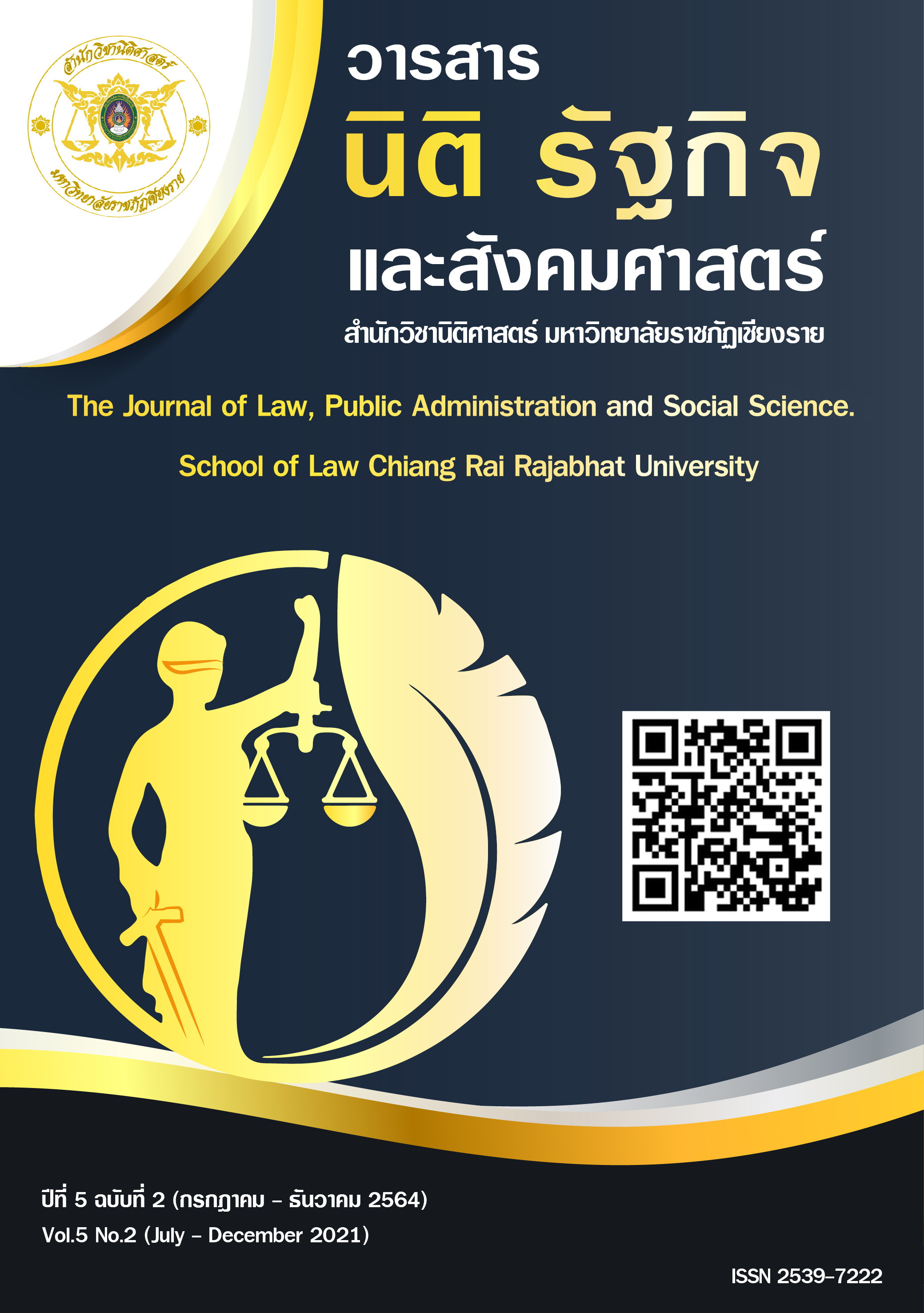Quality of Working Life of Employees leading to Organizational Commitment : Existing Relationship in Workers’ Contexts
Main Article Content
Abstract
The objectives of this academic article are to review the quality of working life and organizational commitment concept and indicates the way quality of working life leads to a substantive organizational commitment. To emphasize, the organizational commitment or a relationship between organizations and employees becomes one of the aspects that has been receiving attention from executives and scholars because they realize it is an important factor that brings about organizational success. This paper also proposes the quality of working life concept and theory, for example, Maslow's hierarchy of needs and ERG Theory. It also includes the viewpoint in feelings that employees have toward their organization and suggestion in several case studies and researches from many domestic and international organizations, which show that the idea of the quality of working life leading to organizational engagement is concrete. Besides, to have a good quality of working life, the quality of working life should conform and respond to employee needs. Therefore, the administrator should create the quality of working life management system and keep observing, evaluating, and constantly following up the system to acquire relevant information that can develop and improve policies for realistic quality of working life management planning, which can affect morale and motivation in employees to be bounded with their organization.
Article Details
References
กฤษดา เชียรวัฒนสุข. หลักการจัดการและองค์การ. กรุงเทพฯ: ทริปเพิ้ล กรุ๊ป, 2561.
เฉลิมขวัญ เมฆสุข และประสพชัย พสุนนท์. “ปัจจัยคุณภาพชีวิตการทำงานที่ส่งผลต่อความผูกพันต่อองค์กรของพนักงานระดับปฏิบัติการบริษัทสยามฟิตติ้งส์ จํากัด.” วารสารธุรกิจปริทัศน์ 9, ฉ.1 (2560): 33-50.
นิติพล ภูตะโชติ. พฤติกรรมองค์การ (Organizational Behavior). พิมพ์ครั้งที่ 4 แก้ไขเพิ่มเติม. กรุงเทพฯ: สำนักพิมพ์แห่งจุฬาลงกรณ์มหาวิทยาลัย, 2560.
ปิยกนิฏฐ์ โชติวนิช. คุณภาพชีวิตการทำงานและความมุ่งมั่นขององค์กรที่มีผลต่อความสุขในการทำงานของอาจารย์มหาวิทยาลัย. วารสารนักบริหาร 37, ฉ.1 (2560): 83-96.
รุ่งโรจน์ อรรถานิทธิ์. EMPLOYEE ENGAGEMENT การสร้างความผูกพันของพนักงานในองค์กร. กรุงเทพฯ: บริษัท เอช อาร์ เซ็นเตอร์ จำกัด, 2554.
รัชนีกร ถิรตันตยาภรณ์ และอมรศักดิ์ โพธิ์อ่ำ. “คุณภาพชีวิตการทํางานที่มีความสัมพันธ์กับความผูกพันต่อองค์การของบุคลากรสาธารณสุขที่ปฏิบัติงานในโรงพยาบาลถลาง จังหวัดภูเก็ต.” วารสารวิชาการแพทย์ เขต 11 31, ฉ.4 (2560): 589–598.
เศรษฐศาสตร์ ไชยแสง. คุณภาพชีวิตในการทำงานกับความผูกพันต่อองค์การของบุคลากรวิทยาลัยราชพฤกษ์. (รายงานการวิจัย). นนทบุรี: วิทยาลัยราชพฤกษ์. 2553.
สำนักงานคณะกรรมการพัฒนาการเศรษฐกิจและสังคมแห่งชาติ. “แผนพัฒนาเศรษฐกิจและสังคมแห่งชาติฉบับที่สิบสอง พ.ศ. ๒๕๖๐– ๒๕๖๔.” https://www.nesdc.go.th/ewt_dl_link.php?nid=6422. สืบค้นเมื่อ 22 สิงหาคม 2563.
Adams, J. S. “Toward an Understanding of Inequity.” Journal of Abnormal Psychology 67 (1963): 422- 436.
Auer, J., and Elton J. Work, Life & Health Study. Australia: University of South Australia, 2010.
Becker, H. S. “Notes on Concept of Commitment.” The American Journal of Sociology 66, 1 (1960): 32-40.
Diraviam, A. “A Study on Relationship between Qualities of Work Life on Organizational Commitment among Health Care Professionals.” IOSR Journal of Business and Management (IOSR-JBM) 18, 9 (2016): 76-85.
Hudson Highland Group. The Case for Work/Life Balance: Closing the Gap. Between Policy and Practice. Australia: Hudson Highland Group, 2005.
Kahn, W. A. “Psychological Conditions of Personal Engagement and Disengagement at Work.” Academy of Management Journal 33 (1990): 692-724.
K.S. Sekhara Rao, Ch. Sahyaja, S. Lahari, and S. Vasavi Pravallika. “Role of Leadership Styles in Quality of Work-Life: A Study on Education Sector.” International Journal of Mechanical Engineering and Technology (IJMET) 9, 3 (2018), 122-133.
May, D. R., Gilson, R. L., & Harter, L. M. “The Psychological Conditions of Meaningfulness, Safety, and Availability and the Engagement of the Human Spirit at Work.” Journal of Occupational Psychology 77 (2004): 11-37.
Maslow, A. Motivation and Personality. 2nd ed., New York: Harpers and Row, 1970.
Meyer, J. P., N. J. Allen and S. A. Catherine. “Commitment to Organization: Extension and Test of A Three Component Conceptualization.” Journal of Applied Psychology 718 (August 1993): 538-551.
Robinson, D., Perryman, S., and Hayday, S. The Drivers of Employee Engagement. UK: Institute for Employment Studies, 2004.
Salancik, G. R. Psychology Foundation of Organizatinal Behavior. Scott: Foreman and Company, 1983.
Sahni, J. “Exploring What Constitutes ‘Quality’ in Quality of Work Life for Female Employees.” International Journal for Quality Research 11, 4 (2017): 785-798.
Saks, A. M. “Antecedents and consequences of employee engagement.” Journal of Managerial Psychology 21 (2006): 600-619.
Walton, R. E. Quality of working life: What is it?. Slone Management Review, 15 (1973): 12-18.
Wardani, Lalila M. I., and Anwar, Muhamad S. “The Role of Quality of Work Life as Mediator: Psychological Capital and Work Engagement.” Humanities & Sciences Reviews 7, 6 (2019): 447-463.


